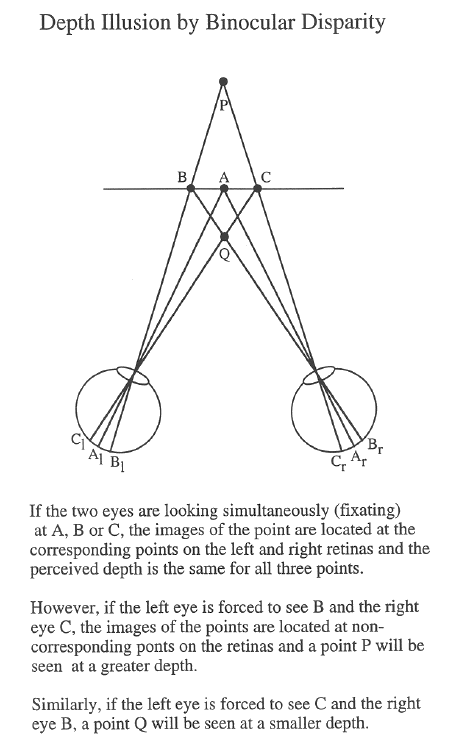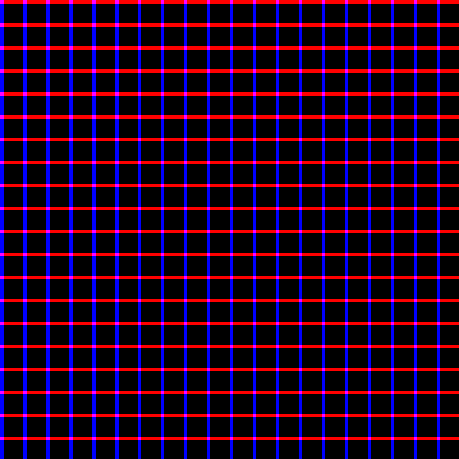
In addition to the depth cues from the monocular information discussed above, much powerful cues of depth can be obtained by stereopsis to gain depth information from both eyes separated by a certain distance. Binocular disparity (differences in various aspects between the two eyes) is a major source of depth information.
Before we discuss the specific binocular clues for depth perception, let's consider an interesting phenomenon called binocular rivalry, which happens when the two eyes are presented with disparate images. Of course this is not a natural situation as throughout the evolution the two eyes have always been exposed to the same envirenment with only slightly different vantage point. In other words, the brain has never experienced conflict information from the two eyes. How would it respond to such an artificial situation?

If you view this image with a pair of red/blue glasses, the two eyes will be forced to see two conflicting images, one with horizontal lines while the other vertical lines. As you may have experienced, you will not percieve the image consistently, as either vertical or horizontal lines. Instead, you find the two eyes alternatively dominate in various local areas so that you may see horizontal lines in some areas while vertical lines elsewhere, and this signle eye dominence keeps changing with time. Note that this binocular rivalry will not happen in the peripheries of the visual field covered by only one of the two eyes.
In fact you can look at anything with the red/blue glasses and experience binocular rivalry, simply because the two eyes now see things in different colors and therefore provide conflict information to the brain.
To see an object clearly, we need to fixate on the object by turning the two eyes in such a way that the object is projected on the fovea of both eyes. The eyes (the optical axes) are in parallel when we fixate on objects in distance, but they have to be crossed to see anything close. The amount of convergence of the eyes is therefore a potential cue for depth. There is some evidence that this convergence information is actually used in a minor way.
Each point P in the space and its two images Pl and Pr on the left and right retinas form an angle PlPPr, as shown in the figure below. Obviously the angle f=FlFFr associated with the fixation point F is f is larger than p=PlPP-r of a more distant point such as P, and smaller than q=QlQQr of a closer point such as Q. The difference between the angle of a given point and the angle of the fixation point is defined as the binocular disparity (or positional disparity as the disparity can also be equivalently specified by the retina positions of the images of the points). The disparity of the fixation point F is defined as 0. And all points closer than F have negative or crossed disparity and all points farther than Fhave positive or uncrossed disparity. Powerful depth perception can be gained from this binocular disparity, as discussed in more detals later.
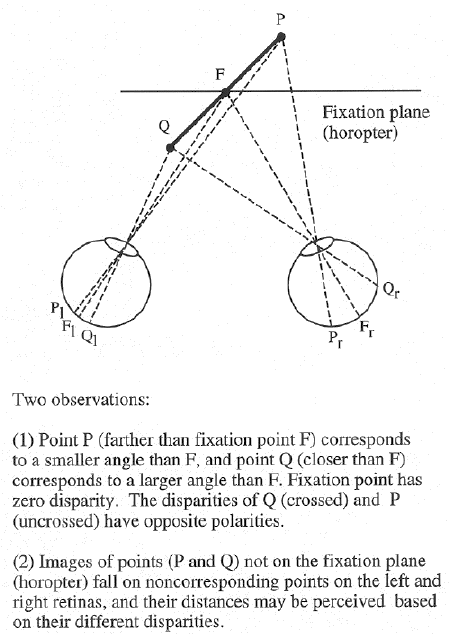
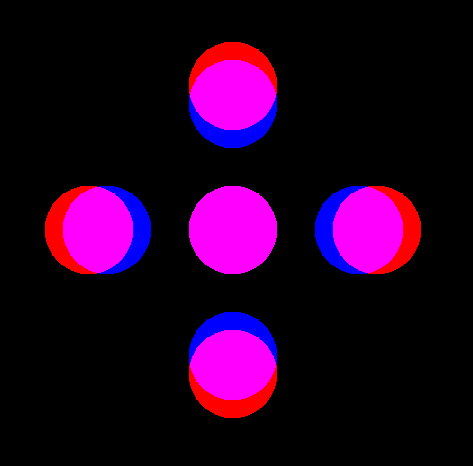
The orientation of any line or edge not on the fixation plane will be seen differently from the left and right eyes. As an extreme example, look with alternating eye at a pencil held between the two eyes perpendicular to the face. The far end of the pencil points to either left (-180 degrees) seen by the left eye, or to the right (180 degrees) seen by the right eye. If you tilt the far end upward (or downward), the orientation difference still exists but is less drastic. This orientation disparity could be easily detected by the orientationally tuned cells in the striate cortex, and could also be used as a clue for depth perception in the visual system, as demonstrated by this web demo.
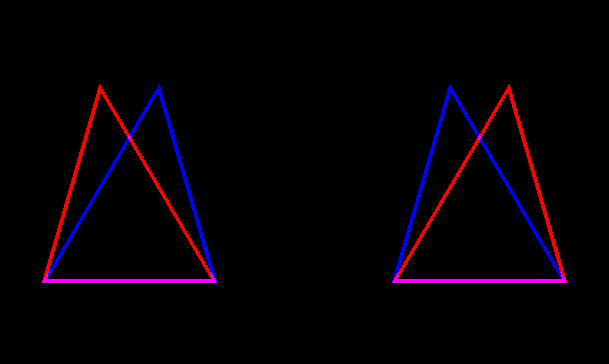
The above two demos are based on the fact that the two eyes are forced to see slightly different images as if they were looking at a real 3D scene. As the result, we have the illusion of seeing 3D objects. Similar effect can also be achieved by looking a single image called Cyclopean stereogram. The trick is, however, the viewer has to fixate at a distance behind the actual image, which is sometime hard to do, so that the two eyes see different parts of the image,
